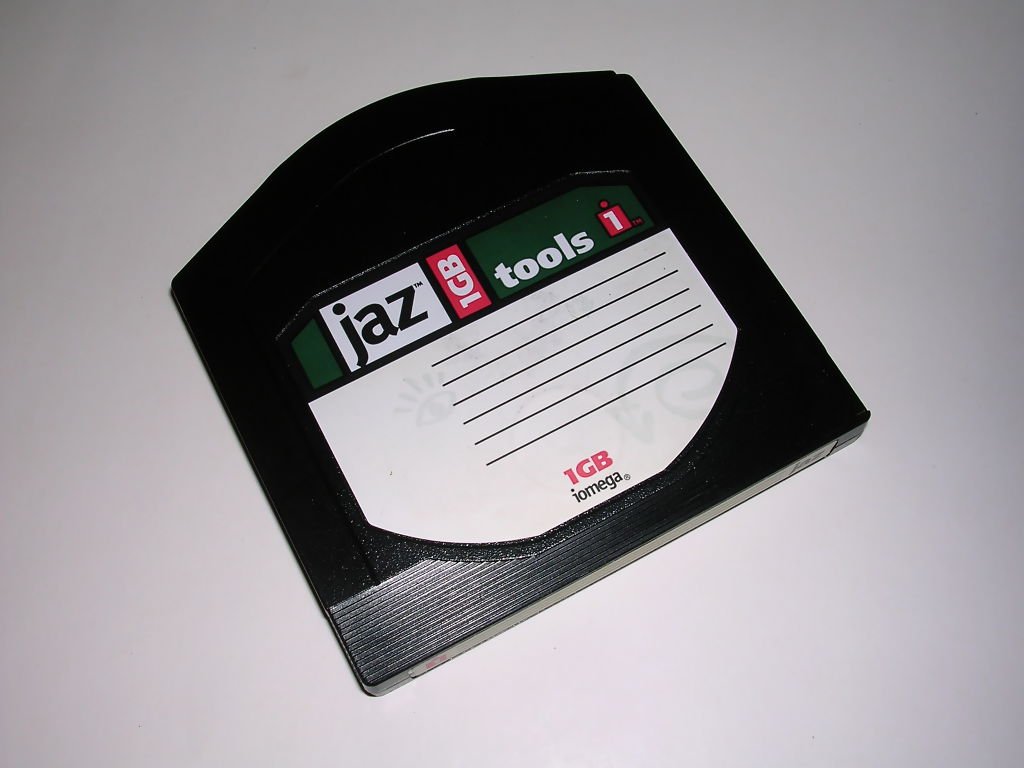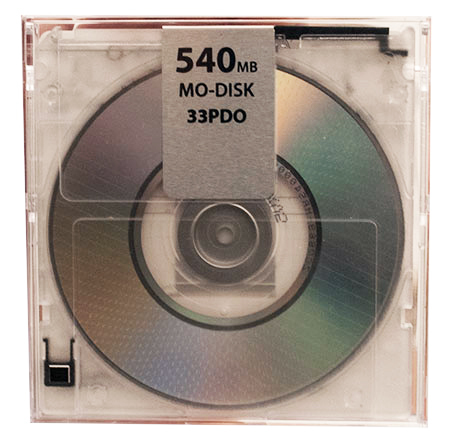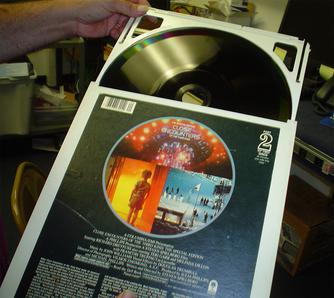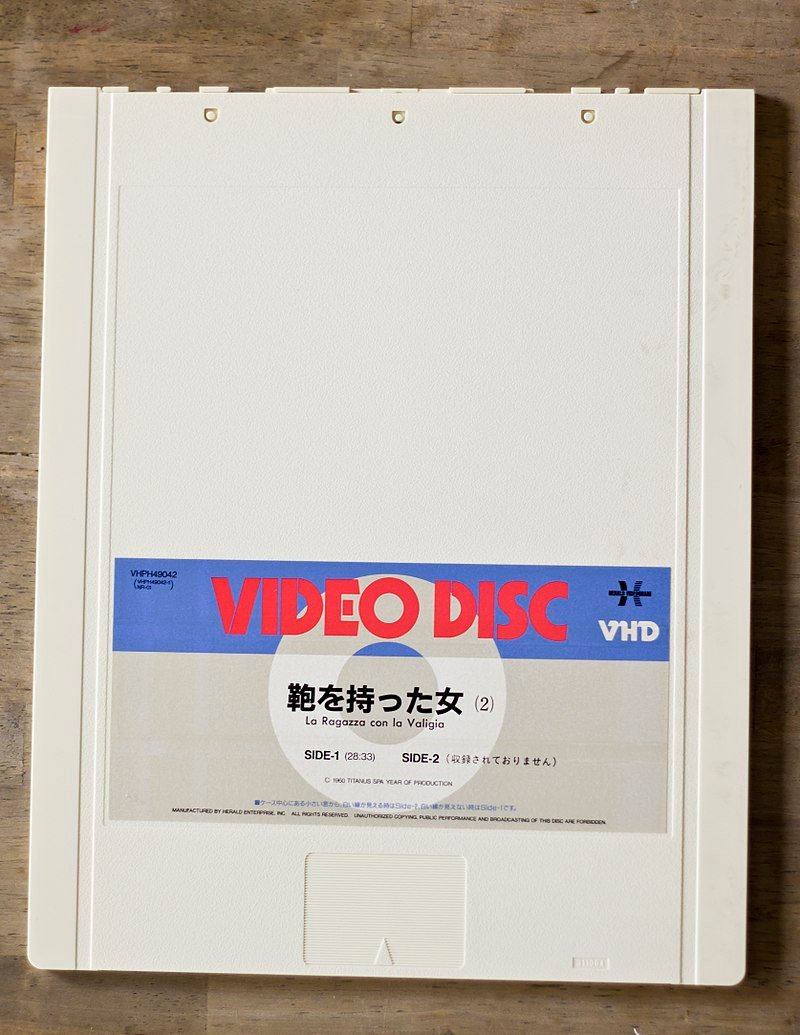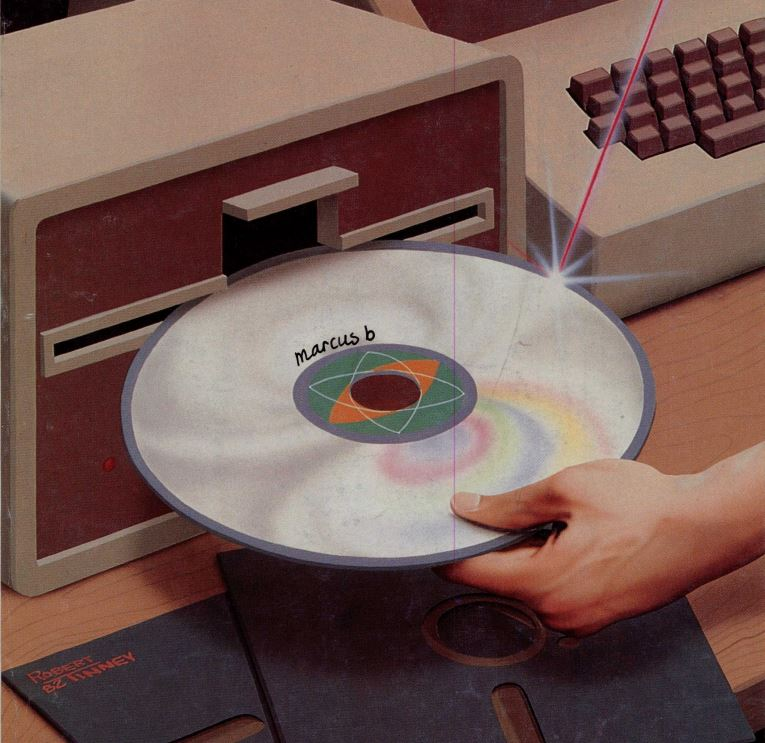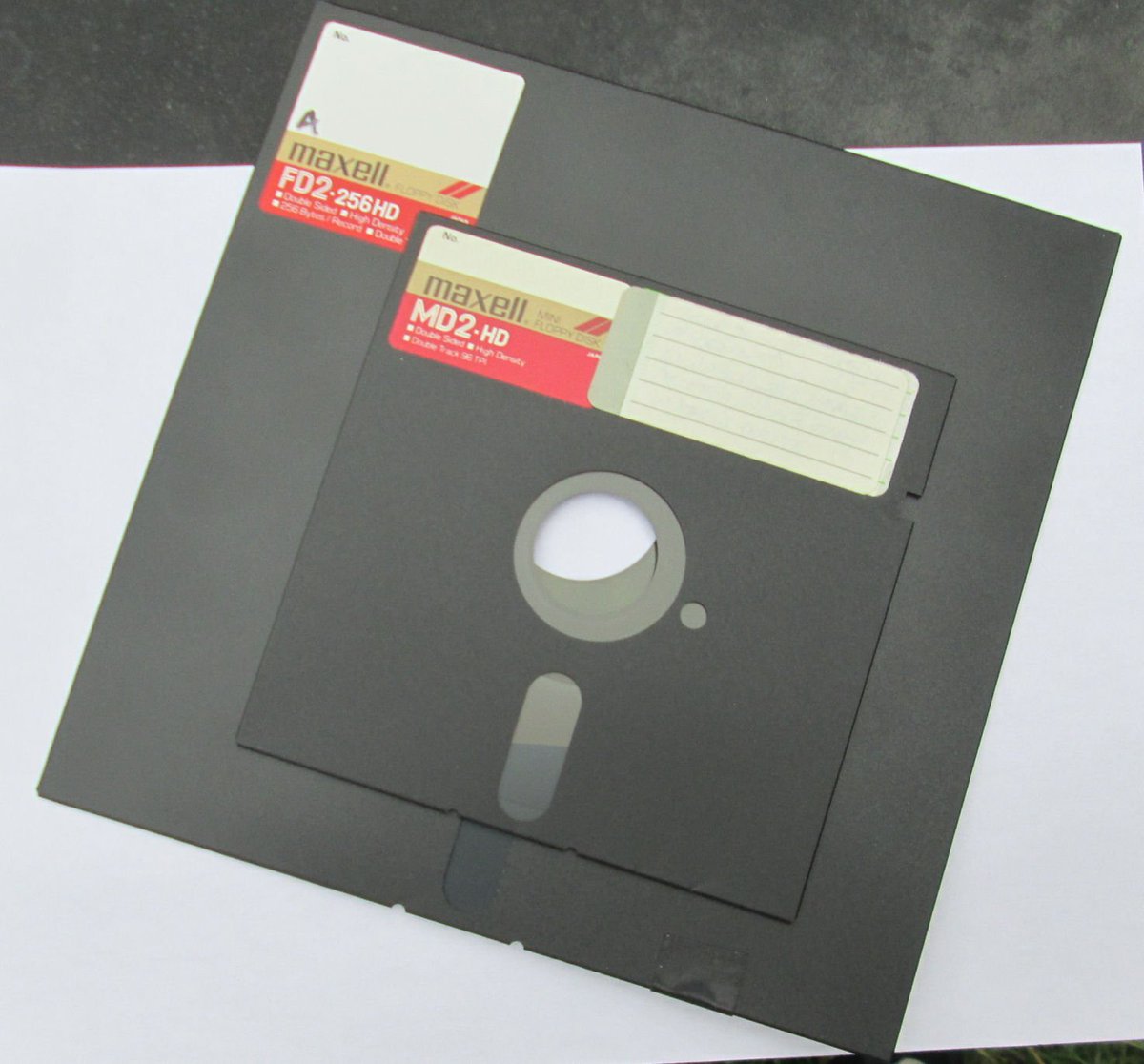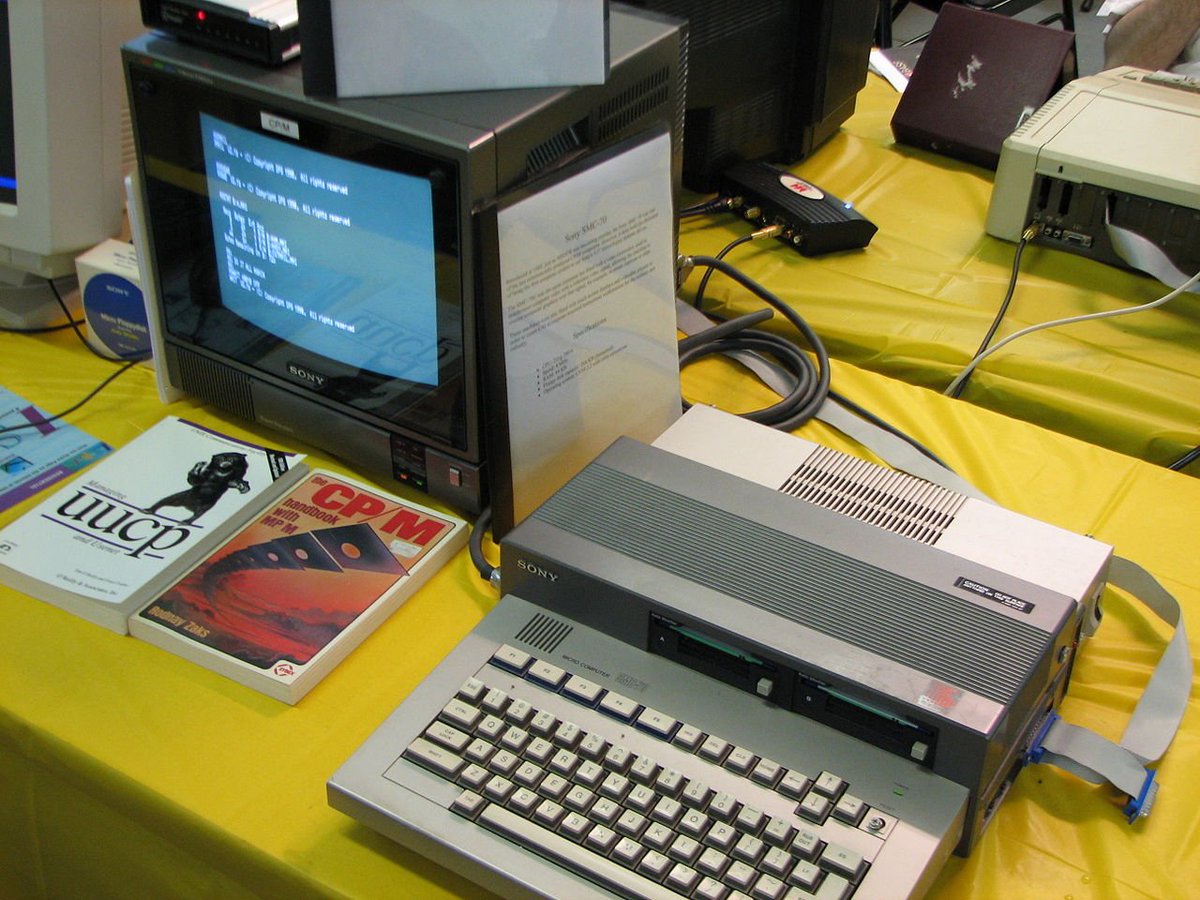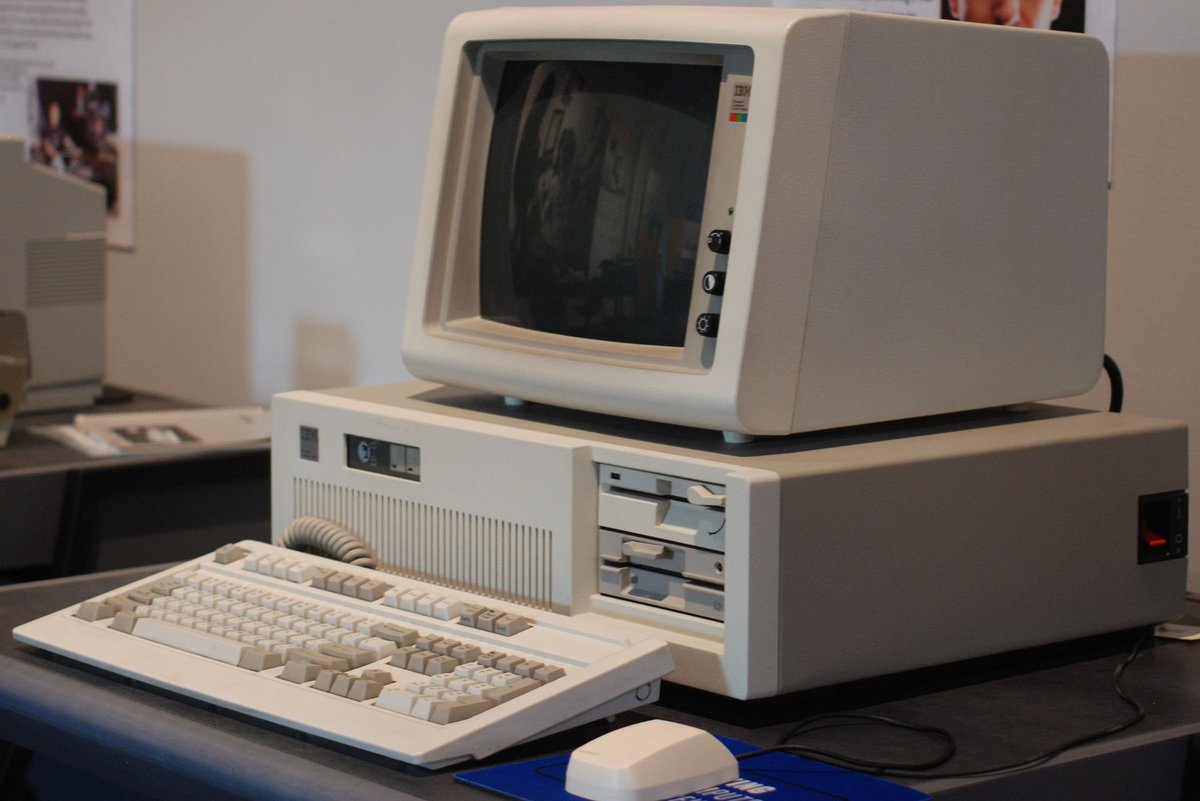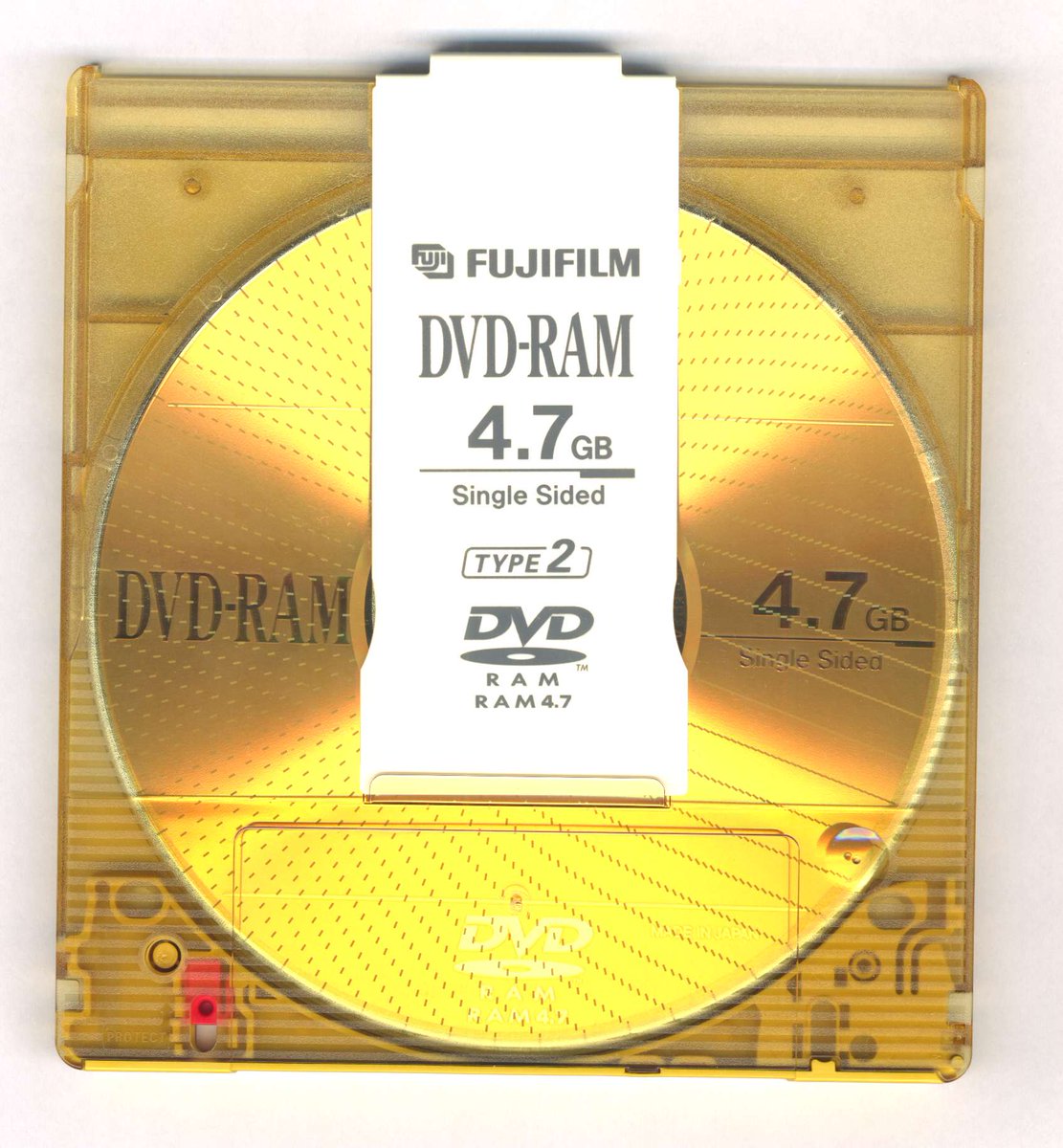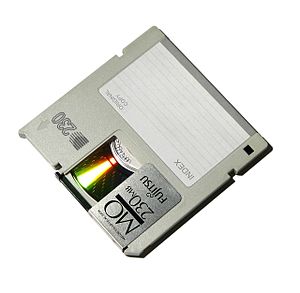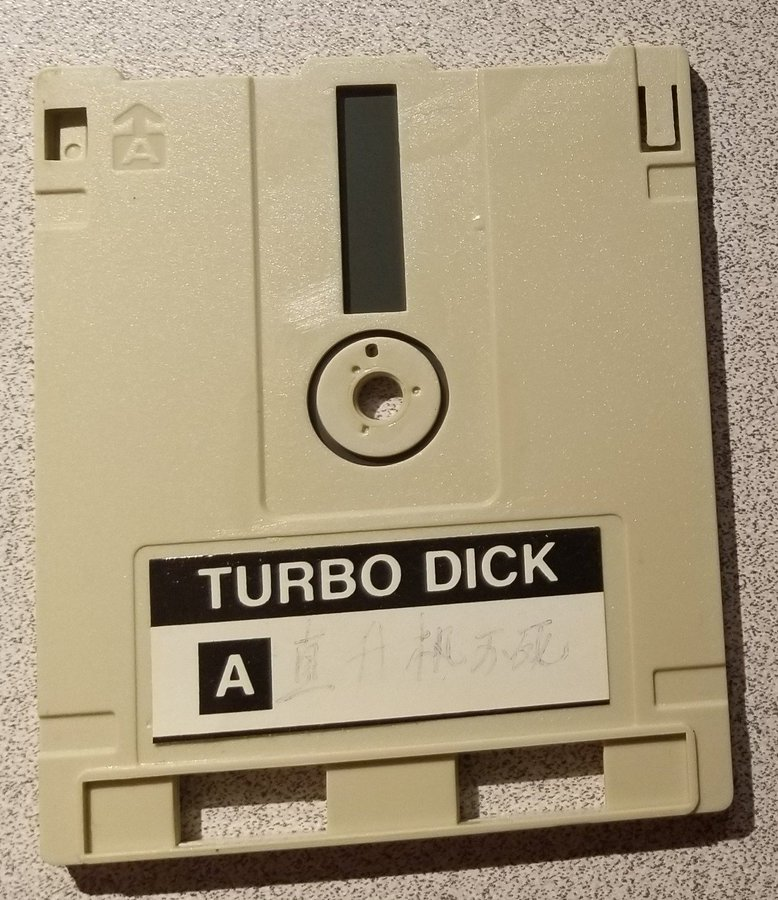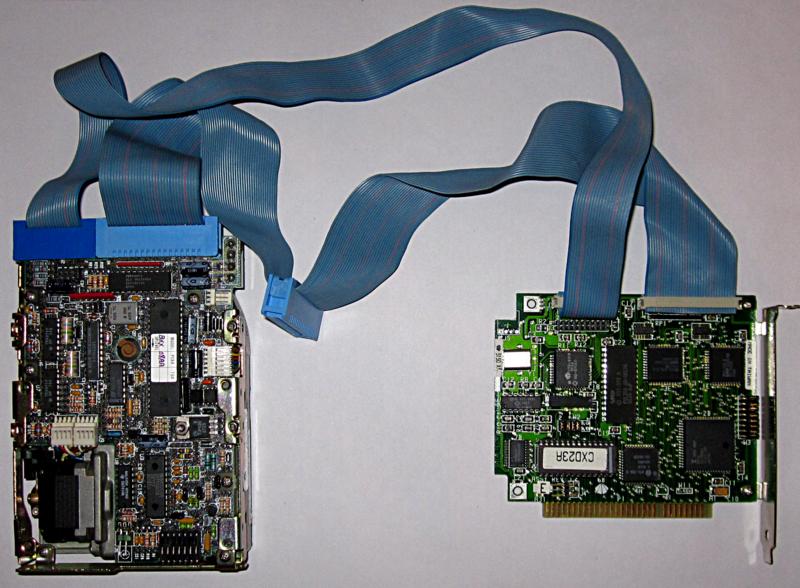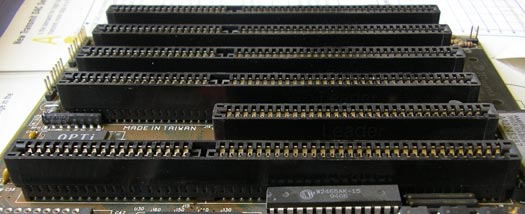oh hey, great.
it& #39;s fun when you decide to make a hilarious meme idea you just had and you find out that the first documented instance of it being used as a meme was transphobic
it& #39;s fun when you decide to make a hilarious meme idea you just had and you find out that the first documented instance of it being used as a meme was transphobic
for context: the meme is the "select all squares with $NOUN" captcha. The first example knowyourmeme documents uses "female" and a picture of Caitlyn Jenner.
I was totally gonna make a version of it that said "floppies" and include pictures of a lot of things that get confused for floppies often, like jaz drives and magneto-optical disks and it was gonna be really funny to, well, me, but now I& #39;ve lost all the steam to do it
could also do "laserdiscs" and include things that get confused for laserdiscs, like CED discs, VHD, DVDs, then get confusing with DiscoVision and CD-Video (which both ARE laserdisc but aren& #39;t called it)
BTW, I& #39;m not saying "I& #39;m refusing to make this meme because that picture means all uses of the meme are transphobic", I think it& #39;s been used so often otherwise that the original use is unimportant now... it& #39;s just that it discouraged me out of doing it.
for the record: Jaz discs are not floppy disks because they& #39;re actually hard disks in a cartridge. It& #39;s a rigid disc, not a floppy one.
Similarly, Magneto-Optical disks aren& #39;t floppy because they& #39;re rigid: it& #39;s a plastic disc like a CD.
Similarly, Magneto-Optical disks aren& #39;t floppy because they& #39;re rigid: it& #39;s a plastic disc like a CD.
and you might go "but wait, aren& #39;t 3.5" disks rigid?"
NOPE! the actual media is still floppy. it& #39;s just inside a rigid case: https://twitter.com/Foone/status/984192922806468608">https://twitter.com/Foone/sta...
NOPE! the actual media is still floppy. it& #39;s just inside a rigid case: https://twitter.com/Foone/status/984192922806468608">https://twitter.com/Foone/sta...
"floppy" disks are called such in comparison to a "hard disk" which use rigid metal/glass platters. they use a flexible plastic substrate instead. it& #39;s the same sort of material as is (well, was) used in cassette/video tapes, just in a circle instead of a long strip.
hard disks were developed in the 50s (for mainframe storage), floppy disks were then developed in the late 60s early 70s, so they were named in relation to the existing disks to distinguish them.
Optical discs weren& #39;t publicly demonstrated until a few years later (in 1972) so there was no comparison there yet.
Although amusingly the the tech to do laserdisc video were developed in & #39;63 by David Paul Greg and James Russell, and then MCA purchased them in 1968, then joined up with Philips who was working on reflective rather than transparent disc.
Meaning optical discs are (kinda) older!
Meaning optical discs are (kinda) older!
so there& #39;s an alternate universe where your apple II was using laserdiscs instead of floppy disks
The early history of the floppy disk is interesting:
Basically IBM wanted a way to load microcode onto their System/370 mainframes. Something portable and cheap so they could send out updates to customers.
The initial attempt was a cassette tape!
Basically IBM wanted a way to load microcode onto their System/370 mainframes. Something portable and cheap so they could send out updates to customers.
The initial attempt was a cassette tape!
When that failed, they switched to the 8-inch "memory disk" that could store 80 kilobytes of data.
They started with it just the bare plastic disc, but they quickly discovered that no matter how carefully they handled it, it got dust and fingerprints on it.
They started with it just the bare plastic disc, but they quickly discovered that no matter how carefully they handled it, it got dust and fingerprints on it.
so they added the vinyl covering with an internal cloth layer that will rub the surface clean. That became the IBM 23FD, used to load data into the 2835 Storage Control Unit to program the System 370. https://twitter.com/txgx42/status/1132457705971568641">https://twitter.com/txgx42/st...
The original IBM version was read-only. It was just to load microcode into the system, so they had no reason to be able to write back to it.
The first writable disk came from Memorex, with the Memorex 650 disk drive, released in 1972.
The first writable disk came from Memorex, with the Memorex 650 disk drive, released in 1972.
the fun thing about how that happened is that one person was responsible for a lot of this, across three companies:
Alan Shugart.
He was the product manager at IBM who headed up the team that built the floppy in 1971.
Alan Shugart.
He was the product manager at IBM who headed up the team that built the floppy in 1971.
He moved to Memorex and ran the team that shipped the Memorex 650 in 1972, then he started Shugart Associates in 1973 and became the main manufacturer of 8" disk drives!
The shrinking of the 8" down to 5.25" was also related to Shugart: Wang Labs was building desktop word processor machines and thought 8" disks were too big and expensive, and worked with Shugart Associates to develop a smaller disk drive for consumer use.
That happened in 1976, which is why it got used by all the late-70s/early-80s microcomputers.
The legendary 3.5" disk had nothing to do with Shugart, for once: it was a Sony design, made in 1981 and first used on the SMC-70 computer which ran CP/M.
The legendary 3.5" disk had nothing to do with Shugart, for once: it was a Sony design, made in 1981 and first used on the SMC-70 computer which ran CP/M.
BTW if you want to know more about Alan Shugart, I go off on a huge tangent about him because I& #39;m mad about how USB floppies work. His influence in the computer industry certainly didn& #39;t end there. (Spoiler: Seagate used to be named Shugart) https://twitter.com/Foone/status/1174506894607577088">https://twitter.com/Foone/sta...
Also the SCSI interface (which is still used in indirect forms to this day and probably will be forever) used to be called SASI, and that first S was "Shugart"
Basically if you& #39;ve stored something on any kind of disk in the last 50 years, Shugart was probably involved in some capacity.
Floppies? he lead the team that invented them, and the team that made them writable, and the company that sold the drives.
hard drives? his company standardized the first interfaces for the PC, and the expandable interfaces still used today
hard drives? his company standardized the first interfaces for the PC, and the expandable interfaces still used today
optical drives? well, those usually use SCSI, and like I said, SCSI started as Shugart Associates System Interface.
Flash drives?
well... you got me there. Although higher end SSDs speak SAS: Serial Attached SCSI
Flash drives?
well... you got me there. Although higher end SSDs speak SAS: Serial Attached SCSI
the SATA interface is a serialization of ATA/IDE, which isn& #39;t related to SCSI directly.
Although as I mention in the previous thread, there is ATAPI, the ATA Packet Interface, which is an interface often used with things like CD burners and zip drives and such.
Although as I mention in the previous thread, there is ATAPI, the ATA Packet Interface, which is an interface often used with things like CD burners and zip drives and such.
and the way it works is that it& #39;s a way to embed SCSI commands inside ATA, and it works with SATA too.
So it& #39;s entirely possible to tunnel SCSI commands over SATA.
So it& #39;s entirely possible to tunnel SCSI commands over SATA.
The NVMe protocol that your modern m.2 drives are using is a built-from-the-ground-up protocol designed for Flash storage. The idea is that gets much better performance than earlier protocols because they were all designed for relatively slow spinning-rust hard drives.
So NVMe is designed to have big command queues and smart client devices and very fast PCI-e based connectors, to standardize previous proprietary PCI-e based SSDs to allow compatibility between drives.
SATA, BTW, is an amusing acronym:
It& #39;s Serial ATA.
But ATA is an acronym too, for AT Attachment.
But AT is also an acronym, for Advanced Technology.
It& #39;s Serial ATA.
But ATA is an acronym too, for AT Attachment.
But AT is also an acronym, for Advanced Technology.
so it& #39;s Serial ((Advanced Technology) Attachment)
The final bit and then I& #39;ll shut up:
Sometimes people wonder what the difference is between "disc" and "disk", and the answer is "it depends".
It& #39;s not 100% consistent between different English dialects: UK English often calls everything "disc".
Sometimes people wonder what the difference is between "disc" and "disk", and the answer is "it depends".
It& #39;s not 100% consistent between different English dialects: UK English often calls everything "disc".
but the usage in american english is usually this:
optical discs are "discs" with a C, floppy disks are "disks" with a K.
optical discs are "discs" with a C, floppy disks are "disks" with a K.
the reasoning is that optical discs are discs, as in the shape. They& #39;re thin flat circular plates, like a coin or a vinyl record.
So they& #39;re "discs" because that& #39;s the shape they are.
So they& #39;re "discs" because that& #39;s the shape they are.
meanwhile floppy "disks" are disk-with-a-K because it& #39;s a shortening of "diskette", which was coined by analogy to "cassette".
It& #39;s a disk-in-a-case (either a flexible or rigid case).
It& #39;s a disk-in-a-case (either a flexible or rigid case).
"cassette" is french, and it& #39;s "casse" meaning case or box, and the -ette is the diminutive, so it& #39;s "small case".
so a diskette is a small disk in a case.
so a diskette is a small disk in a case.
Diskette was clearly coined by americans:
"disk" is the US spelling of the UK "disc".
Who knows why "disc" seemed to catch on for optical discs, even in america though?
"disk" is the US spelling of the UK "disc".
Who knows why "disc" seemed to catch on for optical discs, even in america though?
reportedly at one point people in the UK were using the term "discette" but that seems to have died out long before "diskette" stopped being a common word.
disc & disk both come from the greek "δίσκος", which is latinized as "dískos".
It& #39;s the same root as "discus".
It& #39;s the same root as "discus".
final vaguely related thing:
Apparently in the early 50s, the term for a place you bought records was a "diskery", plural "diskeries".
The sellers themselves were "diskers".
Apparently in the early 50s, the term for a place you bought records was a "diskery", plural "diskeries".
The sellers themselves were "diskers".
time to get my business cards reprinted:
Foone Turing
Professional Disker
Come visit my Diskery at http://floppy.foone.org"> http://floppy.foone.org !
Foone Turing
Professional Disker
Come visit my Diskery at http://floppy.foone.org"> http://floppy.foone.org !
anyway something important to point out:
the distinction between disc/disk is both a dialect thing and a very technical nitpicky thing. So please don& #39;t go yelling at people for getting it "wrong", they might be getting it right in their dialect and in the end, it doesn& #39;t matter
the distinction between disc/disk is both a dialect thing and a very technical nitpicky thing. So please don& #39;t go yelling at people for getting it "wrong", they might be getting it right in their dialect and in the end, it doesn& #39;t matter
it& #39;s one of those things where it& #39;s spelled slightly differently in different dialects because of different cultures, and some technical fields made up rules about the distinction between those spellings.
but it& #39;s exceptionally hard to find a situation where the distinction can lead to confusion, so no matter which way you spell it, it& #39;s probably going to be completely clear what you mean.
So unless you& #39;re just being a pedant, there& #39;s no point in correcting someone.
So unless you& #39;re just being a pedant, there& #39;s no point in correcting someone.
but if you& #39;re looking for a guideline for what to call what:
optical storage that& #39;s just a circle on its own: DISC
magnetic media inside a cartridge/sleeve: DISK
optical storage that& #39;s just a circle on its own: DISC
magnetic media inside a cartridge/sleeve: DISK
and for the weird combinations in between:
optical media that& #39;s inside a cartridge, magneto-optical media, magnetic material without a case?
You& #39;re on your own. Pick one.
optical media that& #39;s inside a cartridge, magneto-optical media, magnetic material without a case?
You& #39;re on your own. Pick one.
Just remember that you shouldn& #39;t combine the two spellings and the S is important and should remain no matter how you spell it.
fun fact:
You know how a lot of people are confused with how 3.5" disks are rigid but still called "floppy"?
Well, South African english fixed that! When they say "floppy", they mean only the 8" and 5.25" ones.
The 3.5" ones are "stiffies"
You know how a lot of people are confused with how 3.5" disks are rigid but still called "floppy"?
Well, South African english fixed that! When they say "floppy", they mean only the 8" and 5.25" ones.
The 3.5" ones are "stiffies"
BTW the weird thing about ATA:
So it& #39;s a standardized version of IDE, which stands for Integrated Drive Electronics, it was a Western Digital development. And the way it works is kinda insane, and it& #39;s amazing that we kept it (and derivatives) so long, and we& #39;re still using them!
So it& #39;s a standardized version of IDE, which stands for Integrated Drive Electronics, it was a Western Digital development. And the way it works is kinda insane, and it& #39;s amazing that we kept it (and derivatives) so long, and we& #39;re still using them!
so prior to IDE/ATA and such, you& #39;d have a hard drive controller and a hard drive. They had two connectors: one for control and one for data.
You& #39;d have one control cable per drive, and one data wire shared between up to 2 drives.
This started with the Shugart ST-506.
You& #39;d have one control cable per drive, and one data wire shared between up to 2 drives.
This started with the Shugart ST-506.
and you might think this is perfectly normal and how drives work today: you have a drive, and it plugs into a "controller" thing, which might be on your motherboard.
But no, not exactly.
But no, not exactly.
See in the early drives, most of the smarts was in the controller. The drive was much stupider, and depended on the controller to do all the computation.
This meant that the two were much more closely tied together.
This meant that the two were much more closely tied together.
you could even do things like increase drive capacity by upgrading the controller, which would let you reformat the drive from MFM encoding to RLL encoding, fitting more sectors in.
And this could also be a downside: if you had a controller die, you had to make sure your replacement supported the same on-drive format or it wouldn& #39;t be able to read it.
All you& #39;d be able to do from the new controller is reformat, which isn& #39;t great if you have data on it
All you& #39;d be able to do from the new controller is reformat, which isn& #39;t great if you have data on it
and now I just realized that I have to go, so I& #39;ll have to leave you on a "WHY IS IDE/ATA SO WEIRD" cliffhanger
OK SORRY.
Another issue with the old smart-controller-dumb-drive model was that you couldn& #39;t have two drives that were too different.
So WD had the idea of moving the controller to the drive: that& #39;s why IDE is Integrated Drive Electronics.
Another issue with the old smart-controller-dumb-drive model was that you couldn& #39;t have two drives that were too different.
So WD had the idea of moving the controller to the drive: that& #39;s why IDE is Integrated Drive Electronics.
So now the drive is going to have smarts and it& #39;s going to handle all the complex things like mapping sector numbers to cylinders and heads and such, and it& #39;s all going to be per-drive. Great.
but the obvious question is: HOW? do does that work?
Do you design a whole new interface? do you use an existing interface? well the existing interface was ST506/ST412, which were controllers... you can& #39;t really adapt that to a drive, right? they just plug in via ISA!
Do you design a whole new interface? do you use an existing interface? well the existing interface was ST506/ST412, which were controllers... you can& #39;t really adapt that to a drive, right? they just plug in via ISA!
BUT WHAT IF YOU DID?
So the early IDE drives were basically just the old drives and a ST412 controller, but the ST412 controller was built into the drive& #39;s PCB.
So what then is the IDE connection, in that situation? it& #39;s ISA.
So the early IDE drives were basically just the old drives and a ST412 controller, but the ST412 controller was built into the drive& #39;s PCB.
So what then is the IDE connection, in that situation? it& #39;s ISA.
and that& #39;s the DARK SECRET of how ATA originally was created:
it& #39;s just ISA, the expansion connector for the IBM PC.
That& #39;s what "AT Attachment" means: it attaches to the AT bus, the 16-bit version of ISA invented with the IBM AT.
it& #39;s just ISA, the expansion connector for the IBM PC.
That& #39;s what "AT Attachment" means: it attaches to the AT bus, the 16-bit version of ISA invented with the IBM AT.
so IDE/ATA is basically a limited version of the ISA bus, with fewer address pins (because you& #39;re always talking to one of the few IDE controller ports).
And really there& #39;s no reason why IDE/ATA couldn& #39;t be used for things other than hard drives, back then!
And really there& #39;s no reason why IDE/ATA couldn& #39;t be used for things other than hard drives, back then!
You could have built an IDE soundcard, or an IDE modem, or an IDE video card. WHY NOT?
It didn& #39;t STAY that way, though. And you can& #39;t really do that anymore... probably.
See just hooking up your hard drive to the ISA bus made perfect sense back in the 6-8mhz 286 era that the IBM AT launched in, but as computers got faster, it became a problem.
See just hooking up your hard drive to the ISA bus made perfect sense back in the 6-8mhz 286 era that the IBM AT launched in, but as computers got faster, it became a problem.
plus we were using IDE drives well into the PCI era.
So while the original IDE/ATA started out as just a weird connector for the ISA bus, later IDE controllers developed a lot more smarts & buffering of their own.
Part of this was to decouple it from the speed of the PC& #39;s bus, but also it just made sense to be smart on both ends
Part of this was to decouple it from the speed of the PC& #39;s bus, but also it just made sense to be smart on both ends
hard drives are slow. they are very very slow, they have to physically rotate the disc and move the head to read and write stuff, so the more buffering and smarts you can stick around that whole mess, the better.
because then your computer can be doing other things while your spinning rust drive moves around to get data on or off, and it can do things like reordering accesses.
because sometimes the PC wants sectors 1, 93482, and 2, and if the drives gets them in that order, it& #39;ll be much slower than if it just does 1,2, then 93482, because it only has to move the head once instead of twice
this sort of smarts is actually part of why NVMe exists:
It makes no sense for flash, or at least it doesn& #39;t make sense in the same way.
older interfaces like IDE/SATA were designed for spinning-rust drives where we have to think a lot about how to optimize access order
It makes no sense for flash, or at least it doesn& #39;t make sense in the same way.
older interfaces like IDE/SATA were designed for spinning-rust drives where we have to think a lot about how to optimize access order
flash chips don& #39;t spin. they don& #39;t work in the same ways at all. So spending all that CPU time to try to figure out how to do it in the quickest order? not as useful.
instead NVMe is a thinner simpler layer between the PC and the drive, having many more command queues means the microcontroller on the flash chip itself can figure out what& #39;s the fastest way to get the data onto/off of the drive.
IN ANY CASE, the moral of the story is that storage is complicated, floppies are neat, memes often have negative connotations you wouldn& #39;t know at first, and also trans rights.
also while trying to reply to this thread, I was looking up some info on another site and it told me to identify all the trains.
we& #39;ve gone full circle! although I said "trans", not "trains", captcha-site.
we& #39;ve gone full circle! although I said "trans", not "trains", captcha-site.

 Read on Twitter
Read on Twitter